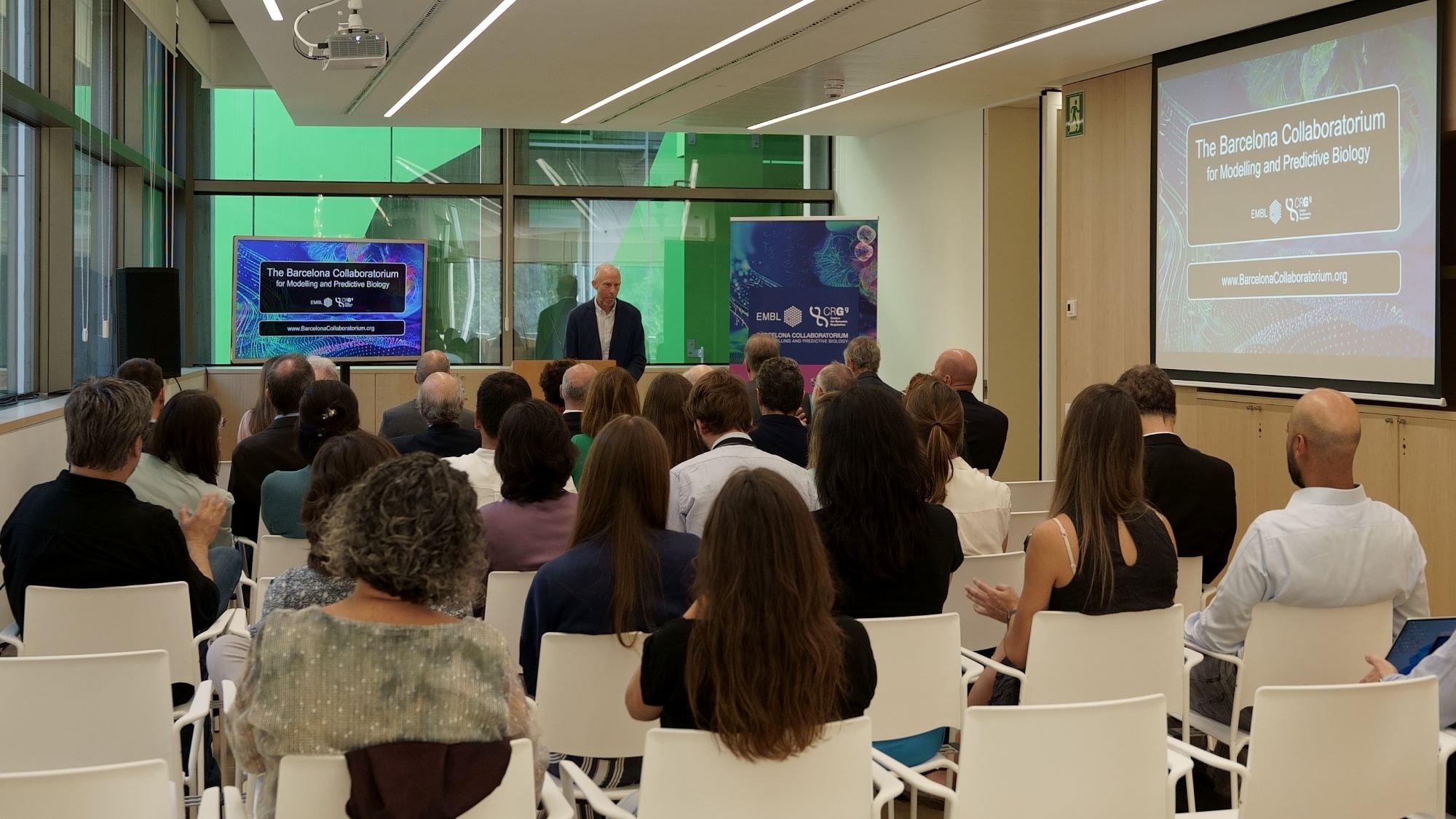A new way of doing science is emerging in Barcelona. The ‘Barcelona Collaboratorium for Modelling and Predictive Biology’, a joint initiative from the Centre for Genomic Regulation (CRG) and the European Molecular Biology Laboratory – Barcelona (EMBL Barcelona) was inaugurated in early October at the PRBB with the kick-off Symposium ‘Programmable Life’. Occupying a whole floor of the Pasqual Maragall Foundation (FPM) building, it aims to be a space to “engineer biology” in Barcelona.
The why and the how of the Barcelona Collaboratorium
In the kick-off meeting at the Barcelona Biomedical Research Park (PRBB) auditorium, CRG researcher Ben Lehner, one of the motors of the creation of the Collaboratorium, explained the why behind this idea.
“Humans have become incredibly good at engineering. But we still don’t know how to engineer something as remarkable as a cheetah – which can go from 0 to 100km in 3 seconds, and can build itself and reproduce. Actually, we don’t even know how to engineer tissues. Or cells. Or even, easily, proteins”, started Ben.
But we will, according to the young scientist. And to achieve this we will need a lot of data, which we are already amassing in great quantities. In the lifetime of his lab, he said, sequencing a genome has gone down from costing 1 billion dollars to 200 dollars.
But data alone is not enough. Biology is so complex, that there are more different ways to make a 100-aminoacid protein than there are atoms in the universe. Which means it’s virtually impossible to either try all combinations experimentally or even search through that space computationally. What we need are generative models. “And that’s just for the simplest structure”, continued the biologist. “If we go to cells, organs, the combinatorial space is huge. We need a lot more modeling, of all types, to make biology predictive”. And it needs to happen here: in Europe, in Barcelona. Hence, the creation of the Collaboratorium.
“We have vast amounts of high-quality biological data available, but no theoretical and computational tools that help explain and predict complex biology”
Ben Lehner (CRG)
James Sharpe, the other brain behind this new project, went on to explain how they are planning to achieve that.
In a nutshell, it is based in a new way of organising science; rather than a fixed structure in separate labs, with head labs, postdocs, PhDs, they look for a more fluid, collaborative structure. They also want to encourage mobility, and so they plan that half of the people working at the Collaboratorium will be visiting fellows or scientists in a sabbatical, who would spend there a few months and have a mentoring relationship with the other more stable staff. Therefore, there will be open annual calls to bring these world-leading experts to work under one roof, in collaboration with the local researchers.
Collaboration all around
“Although the Collaboratorium will not be physically at the PRBB is not that far away – a 10 min walk – so we hope the interaction with the rest of the community here at the PRBB will be very important”, added Sharpe, talking about the park where both CRG and EMBL are located. And they also want to start collaborations with other centres across Barcelona, as well as to become a global reference in this type of science, based not on rigid labs but on visitors coming and going, hosting great minds that interact with each other.
The topics will be as varied as the researchers participating want them to be.
“We want to enable work from molecules, up all the way to ecosystems, with cross-fertilisation of ideas”
James Sharpe (EMBL-Barcelona)
Apart from the theoretical models that will hopefully come out of the Collaboratorium, there is an annual symposium planned, which will be based on the topics the community itself proposes, plus workshops and other events.
The initiative is expected to run for at least five years and is jointly funded by the CRG, EMBL Barcelona, the Generalitat de Catalunya, the Spanish Ministry of Science and Innovation and the CRG’s ‘Severo Ochoa Centre of Excellence’ programme.







